5 great reverb pedals guitar players need to try
Space is the place with these inspiring reverb pedals
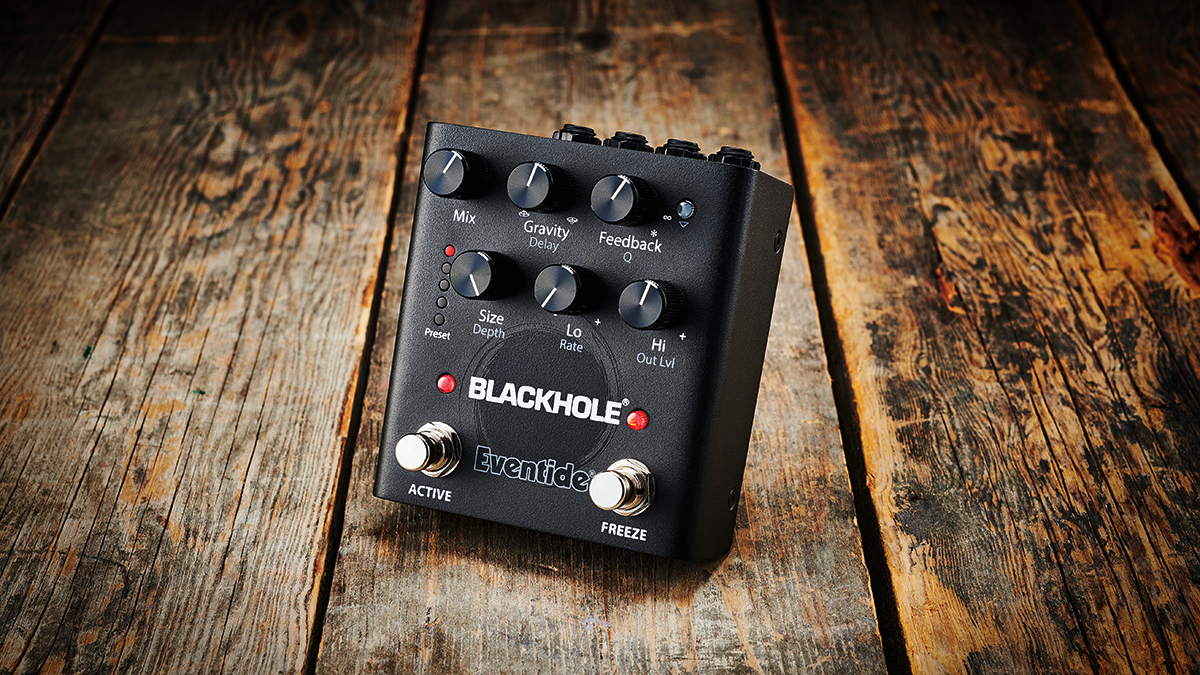
What started off as a desire to have recordings sound more ‘real’ and less flat has become a 60-year obsession. Given the design of concert halls and religious buildings, clearly reverb is a fascination that has preoccupied musicians for much longer.
What’s changed is that, with modern technology, you can bring the concert hall to the back room of your local pub, or your bedroom. Modern reverb pedals can go much further than that. They can model impossible spaces, even infinite ones, meaning that the only limit to what you can create is your imagination.
History in brief
Reverb is the sound of reflections in a space. Where echo and delay pedals give clear, identifiable repeats, the spacing of repeats – or reflections – in a reverb means that they're usually too close together to separate.
Natural reverb can of course be heard in places like caves, or buildings like cathedrals or concert halls. As a result, early reverb was created in studios using dedicated echo chambers, where sound was routed and then re-recorded.
This was costly and took up a lot of space. Other solutions soon emerged. The first was suspending a metal sheet from springs, and then running input through it. This ‘plate reverb’ was very popular for studio use, but still required a lot of space.
Spring reverb tanks were portable, and though more synthetic, they became prized as a sound in their own right. The principle behind their operation was similar to plate reverb – a transducer at one end, and a pickup at the other. By using a coiled spring, the need for a large sheet of metal was removed, albeit with a change in the timbre of the reverb as a result.
Digital reverbs, naturally, were a game-changer. Starting as multi-tap delays, as processing power increased they eclipsed other reverbs. Due to the number of repeats, or reflections, involved in a ‘true’ reverb, digital reverb was an offshoot of developments in digital delay.
Get the MusicRadar Newsletter
Want all the hottest music and gear news, reviews, deals, features and more, direct to your inbox? Sign up here.
As reverb became available in pedal form, players could now access cinematic, studio sounds that had previously been the preserve of rack units
This is why there's no such thing as an ‘analogue’ reverb. Additional developments such as pitch-shifted or modulated tails radically changed the timbres associated with digital reverb.
As these became available in pedal form, they had a huge effect on ambient and post-rock guitar, as players could now access cinematic, studio sounds that had previously been the preserve of rack units.
More recently, granular reverb has become popular. It’s an offshoot of granular synthesis – that is, creating synthesised sounds using small loops of audio. Since digital delays and reverbs work by capturing a buffer, or loop, of audio, it’s natural to then seek to manipulate this. This can create strange, synthesised pads and reverb effects that no longer sound quite like a guitar.
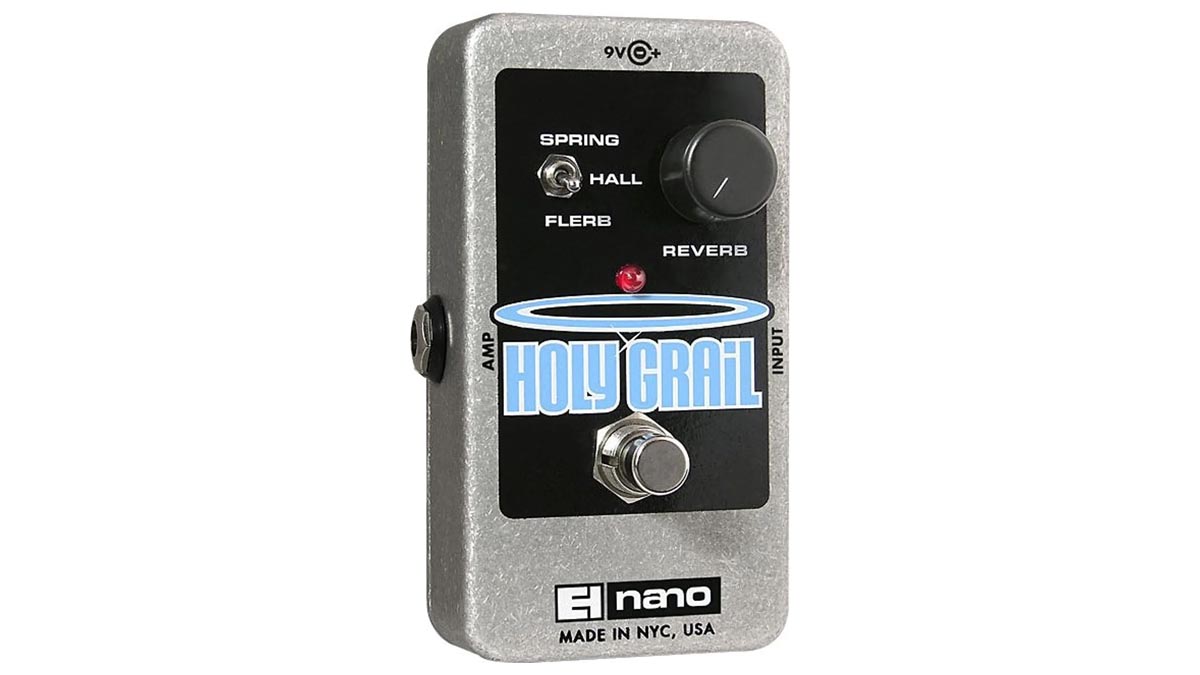
Electro-Harmonix Holy Grail
Our expert review:
Specifications
Reasons to buy
Reasons to avoid
Compared to some of the pedals on the list, the Holy Grail is simple to a fault, not to mention affordable. However, there’s a fair amount of depth to this deceptively simple pedal.
Especially in its larger-enclosure format, for many years it was a go-to reverb before the boutique pedal explosion, and as a result has been used on a lot of records.
It has three modes, spring, hall and flerb. The spring is a passable recreation of a spring reverb, but it’s the hall mode that shines. The Holy Grail’s single control takes it from the ambience of a small room to a huge concert hall.
Finally, there's also a flerb, or flanged reverb mode, that at extreme settings isn't particularly usable, but can create interesting textures when introduced carefully to a guitar part.
If you’re a ‘less is more’ kind of player, then the simplicity of the Holy Grail will likely resonate with you.
Alternatives: TC Electronic Hall Of Fame 2, MXR Reverb M300
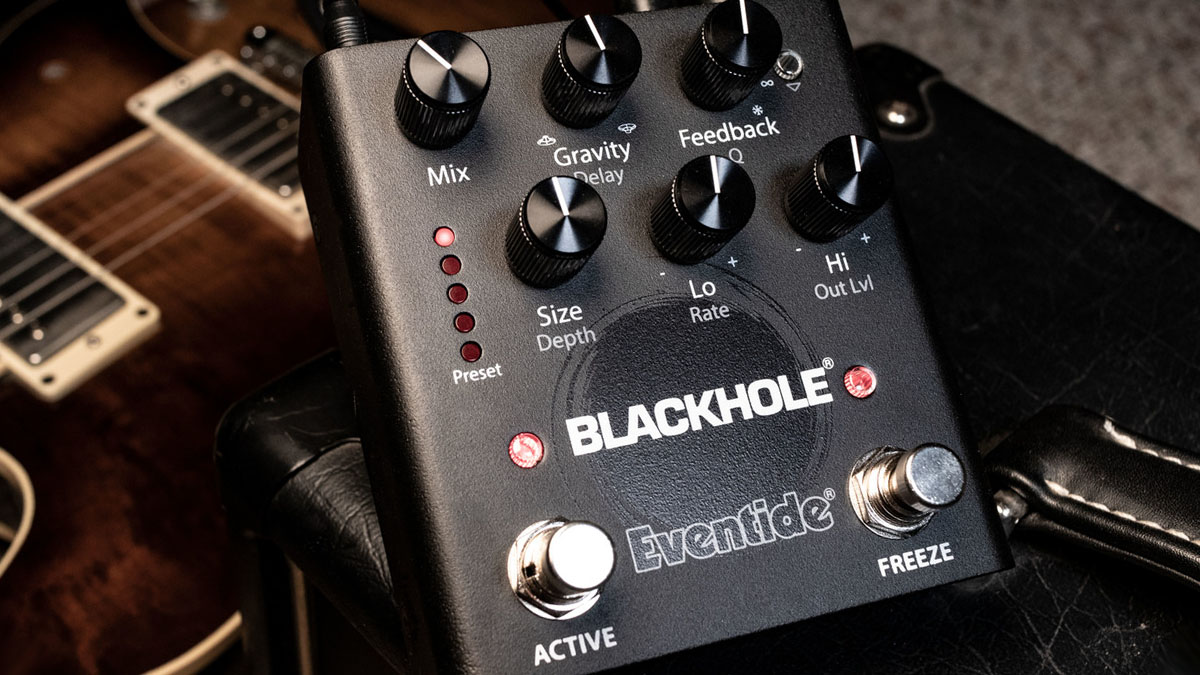
Specifications
Reasons to buy
Reasons to avoid
Of all the algorithms in Eventide’s flagship Space reverb, none captured the imagination so much as the Blackhole preset. Guitarists, keyboard players and producers alike gravitated towards the pedal for this setting alone, and Eventide brought out a VST plugin specifically to model the setting.
It’s no surprise then, that when designing their new streamlined range Eventide decided to break the Blackhole out into its own pedal. The result is much as you'd expect - a pitch-perfect recreation of what made the original Blackhole great.
There’s fewer controllable parameters than on the original Space, but the core sound is the same. In addition, the ergonomic 'freeze' switch on the front panel makes for an intuitive and fun way of using the pedal dynamically.
In addition to the core Blackhole setting, there’s four more presets out of the box. As you’d expect, there’s full MIDI control as well as preset creation and loading via software. It’s got a mappable expression out, and switches for mono and stereo operation, as well as guitar and line level, should you want to use it on other sound sources, or in the studio as well as on your pedalboard.
Alternatives: Eventide Space, Meris Mercury 7, Strymon BlueSky
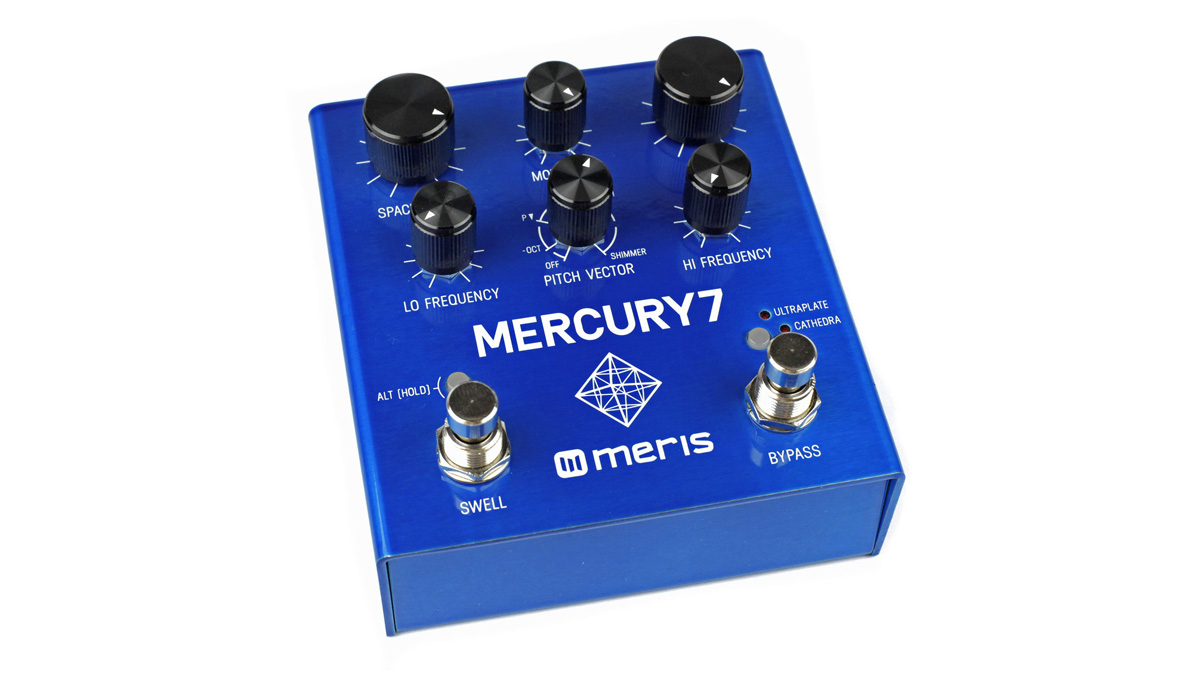
Specifications
Reasons to buy
Reasons to avoid
Meris was started by former Strymon employees, and you can see this in the way they approach form-factor and functionality. Their designs, however, are much more eccentric than anything in the Strymon stable.
The Mercury 7 is their attempt to capture some of the ethereal sounds typical of classic sci-fi soundtracks. What that means in practice, is long, pitch-shifted and modulated reverbs, with a lot of control over the reverb tail.
Many studio reverb sounds will have come from Lexicon or Eventide, and there’s a hint of rack Eventide units about the Mercury 7. That said, though their initial inspiration was 80s sci-fi like Blade Runner, the Mercury is, to our ears at least, more of a modern-sounding reverb.
The Mercury isn't just an Eventide clone, either. It has a different timbre across its two presets, and is more focussed on expressive modulation control. There are several different pitch controls to give movement in pitch as well, meaning that when combined with the modulation options, the Mercury can create a lot of movement in a given reverb patch.
Alternatives: Eventide Blackhole, Strymon BlueSky
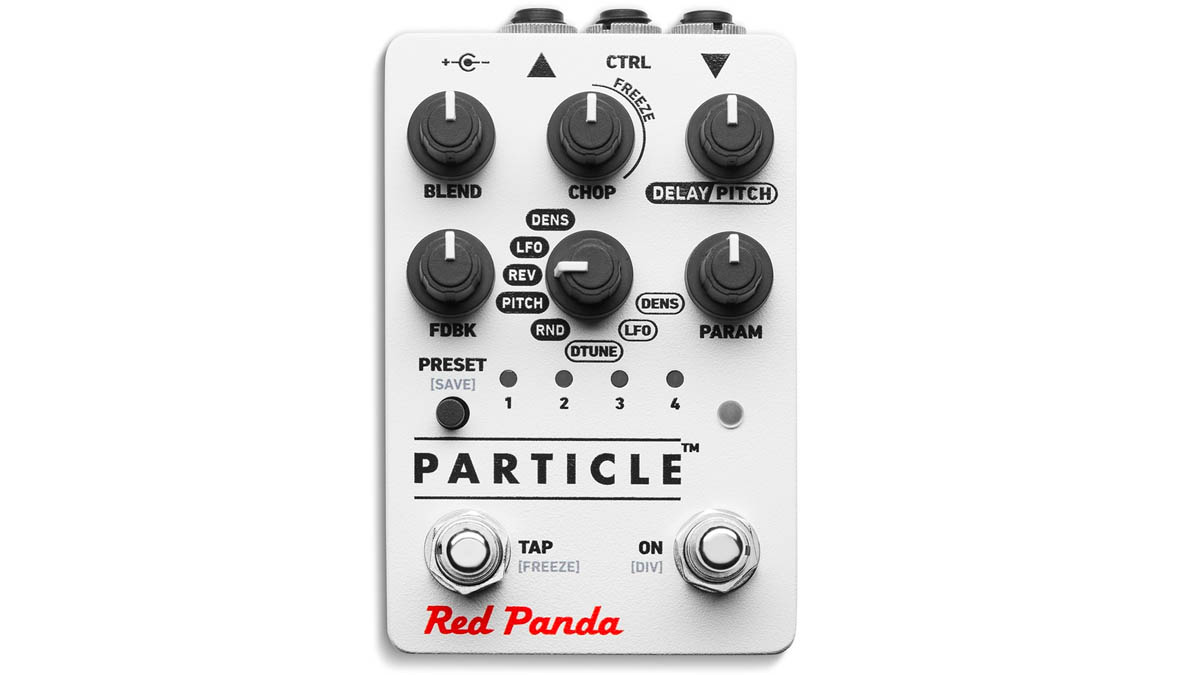
Red Panda Particle V2
Specifications
Reasons to buy
Reasons to avoid
The Particle is a granular delay pedal, not a reverb. However, the ability to freeze sampled input, as well as smear together repeats means that it blurs the line between delay and reverb.
Granular effects are created by sampling small chunks of sound in order to create synthesised textures. This means the timbre of the Particle’s repeats and reflections is unique.
The addition of randomness into the bargain means that the Particle can cover a lot of ground, from clearly-defined, bitcrushed repeats, to morphing clouds of fuzzy reverb. In DENS mode, it’s closer to a bitcrushed digital delay, whereas the random buffer resizing that occurs in the RND mode takes it into reverb territory.
Its two parameter controls change depending on what patch you’re in, allowing you tight control over the sound of the pedal. It’s also got an expression out for dynamic effects and live performance use.
Alternatives: Hologram Infinite Jets, Hologram Microcosm
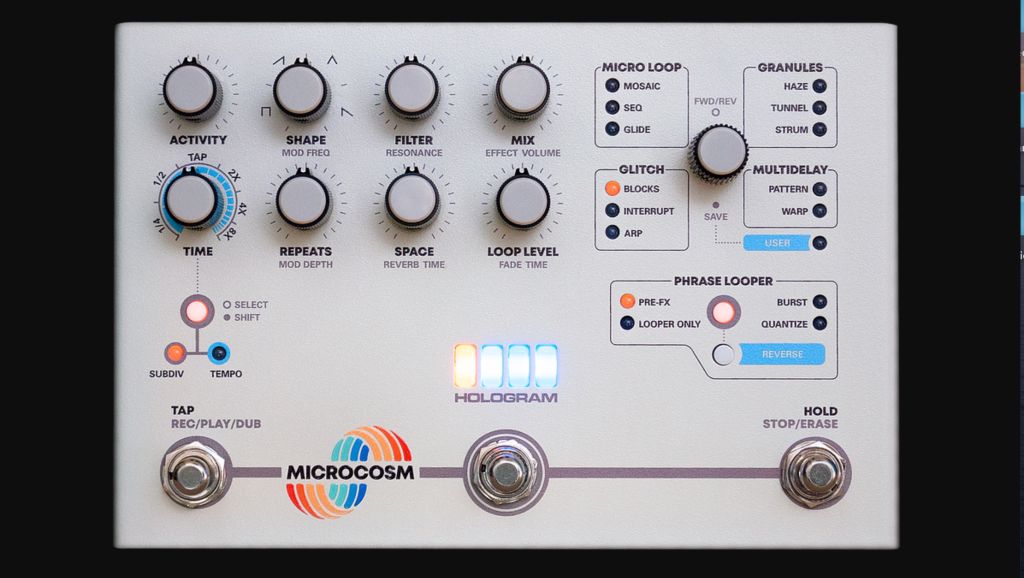
Hologram Microcosm
Specifications
Reasons to buy
Reasons to avoid
The Microcosm is perhaps more correctly a synthesizer than a reverb pedal. It takes a sound source, and uses the techniques of granular synthesis to create an output. It just so happens that with guitar, this often sounds like a reverb – albeit a very exotic one.
Alongside its effect modes, there’s a sequencer and looper, and several context-specific controls on the front panel. The three modes most like reverb sit under the ‘granules’ presets section.
That said, the additional functionality of the looper, including reversing, means that even in other modes, pad-like effects can be created that blur the line between looping and reverb.
Of course, the other thing to consider is that players will often run a delay before reverb, and the sheer number of different options on the Microcosm again come into play here.
It’s closer to a studio rack unit than a traditional pedal, with MIDI control over every parameter, so can be used to interact with sound sources earlier in your chain in unpredictable and rewarding ways that go beyond what traditional reverb can do.
Alternatives: None.
Read more
Alex Lynham is a gear obsessive who's been collecting and building modern and vintage equipment since he got his first Saturday job. Besides reviewing countless pedals for Total Guitar, he's written guides on how to build your first pedal, how to build a tube amp from a kit, and briefly went viral when he released a glitch delay pedal, the Atom Smasher.
“A pedal that sings with harmonic richness and blooming touch response”: Tone King offers up boutique tube amp tones for your pedalboard with the Imperial Preamp
“Each and every unit is perfectly dialled in to the 'sweet spot' that can be so elusive to find in vintage pedals”: Pigtronix’s Gas Giant is a high-gain fuzz pedal with a FET-driven onboard noise gate










